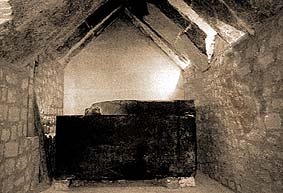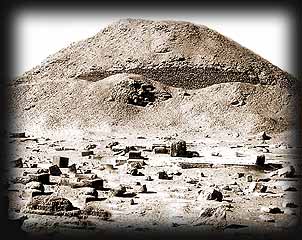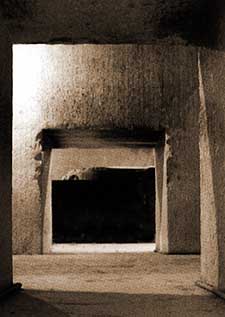|
|
|
 |
|
Little evidence remains from Teti's rule, but it appears that he came to power through his Chief Queen Iput (it is thought that she was the daughter of the last king of the 5th Dynasty - Unas / Wenis). It was through the Queen Iput that the royal lineage descended, giving the kingship to Teti and a (possible) smooth transition from one dynasty to the next. Teti further strengthened his hold on power by seeking support of the nobility in the country - the Nomarchs, he married his daughter Seshseshet to the vizier Mereruka - later to be Chief Priest of Teti's pyramid complex (Mereruka's masataba tomb lies close to Teti's pyramid). The little that does survive from this period does show that Egypt was sound - there was no internal squabbling, and her people were quite wealthy (evidence for this wealth comes from the impressive tombs). Egypt also had good foreign contacts / trade with Byblos, Syria and Nubia. Teti also became associated with the cult at Hathor at Dendera - the first pharaoh to do so. The ancient histrian Manetho states that Teti was murdered by his own bodyguard - although no other evidence has been found to support this claim. Before the throne passed to Teti's son, Pepi I, there is vague references to another king - Userkare (he may have reigned very briefly before Pepi I came to power). Pepi I was the son of Queen Iput (Teti did have a second queen - Khuit, both queens were buried in smaller satellite pyramids next to the larger pyramid of Teti).

The Pyramids of Teti's Queens -Iput and Khuit Both queens had their own separate pyramids within their own enclosures. Iput's pyramid was originally built as a mastaba tomb but was later altered into a pyramid by Pepi I (her son). The pyramid had a height of 15.75m - it was built directly over the burial shaft of the Masataba. Although Iput's burial had been disturbed, her skeleton was still intact - part of a necklace, a gold bracelet and 5 canopic jars were also found. Little now remains of Khuit's pyramid - its estimated original height of 20m has now shrunk down to a mere 7m. |




